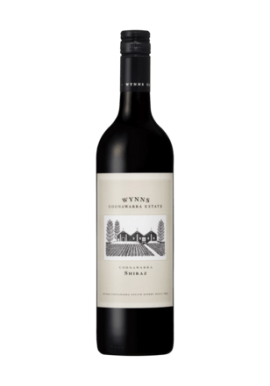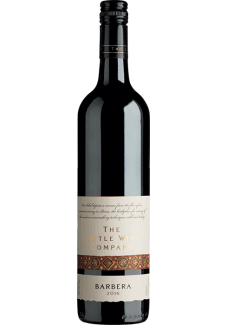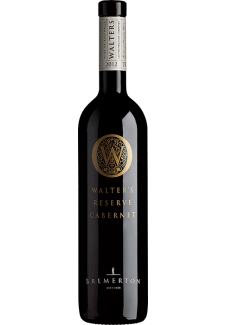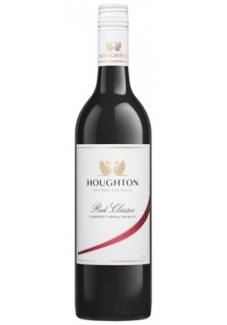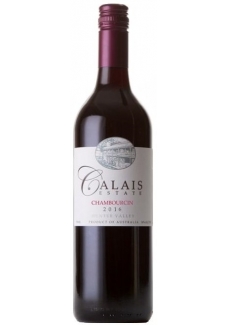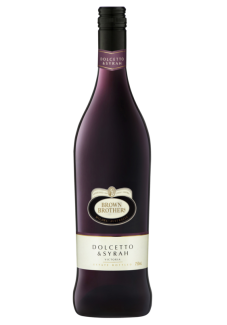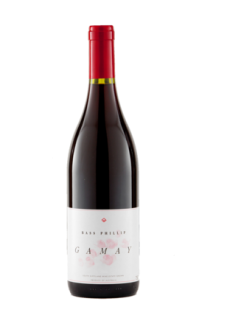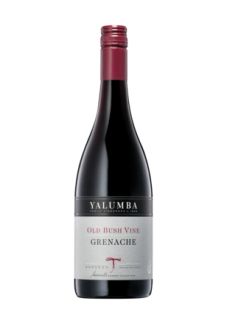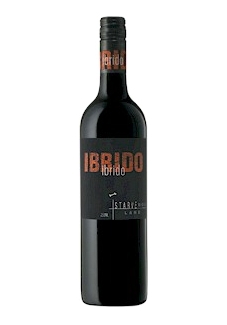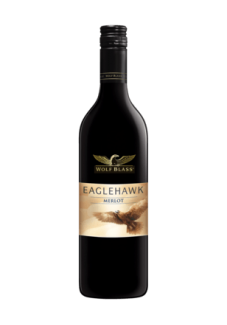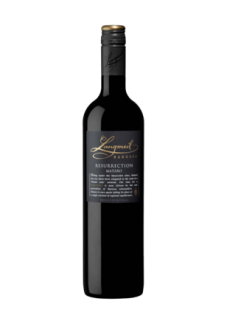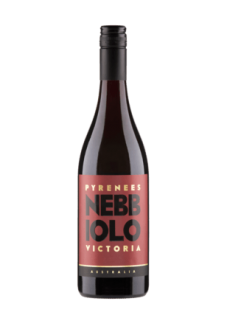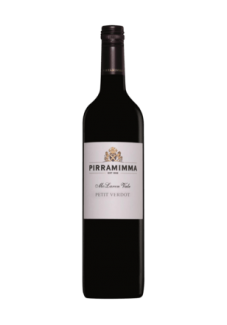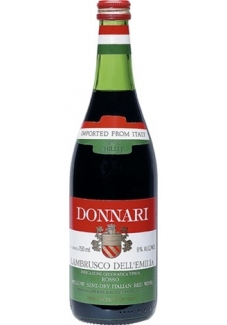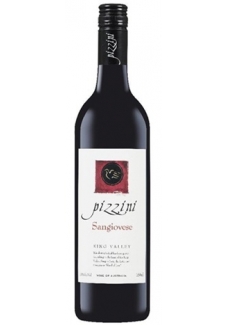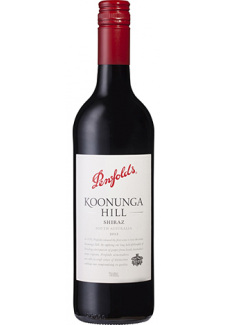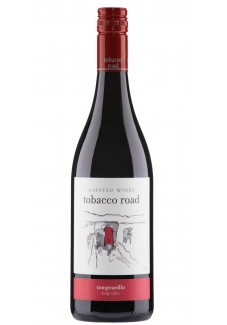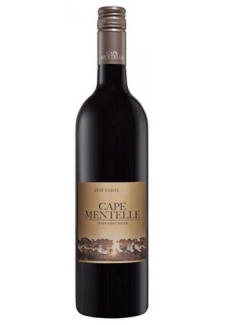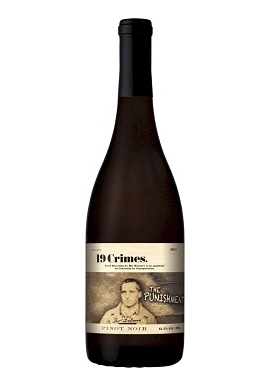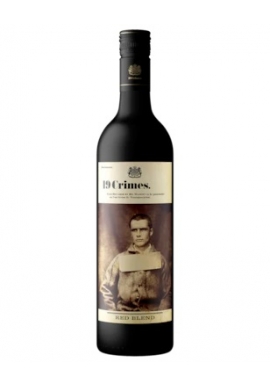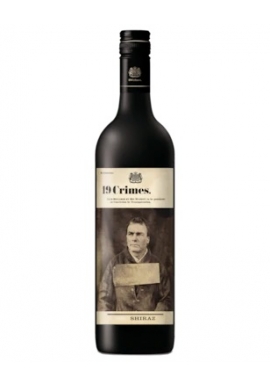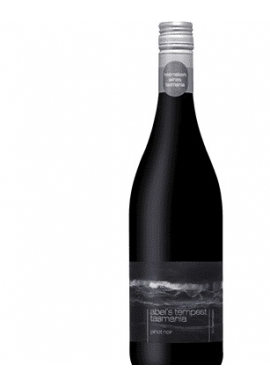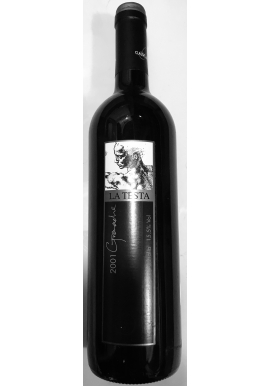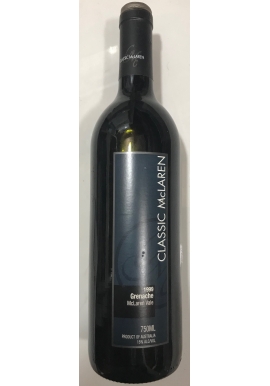AUSTRALIAN RED WINES
Red wine comes more naturally to Australia than white.The importance of the right soil than Australia's best red wine vineyard.South of Adelaide near the south west coast of South Australia, the terrain is completely flat,an abrupt deposit of a most unusual fertile red earth.Below it lies a few yards of pure chalk, and then a great reservoir of...
Red wine comes more naturally to Australia than white.The importance of the right soil than Australia's best red wine vineyard.South of Adelaide near the south west coast of South Australia, the terrain is completely flat,an abrupt deposit of a most unusual fertile red earth.Below it lies a few yards of pure chalk, and then a great reservoir of water.It is recognised as one of the world's most distinguished vineyards- Coonawarra.Coonawarra benefits from its far south climate as well as its soil.Its wines have what the trade calls elegance even while they are young.
Two of the red wine vines the Australians have planted have done them proud. The Bordeaux Cabernet mainly refered as Cabernet and the Shiraz of the Rhone often called Hermitage are both so successful that neither can be called better than the other. The best wineries make varietals wines from both,most of them in several different places, and either blend them or sell them separately as their judgment dictates.Within the Hunter Valley Region of New South Wales - the quality area of New South Wales, makes big and robust red wines, hugh almost sweet, Hermitage, strong tough Cabernet.Chancellors Cellars is proud to present an extensive list of Australian and International wines. Unlike Europe, Australia is not governed by the strict wine laws imposed on European wine growers, who are restricted to growing certain grapes in certain areas. The result is that while France for example has thirteen (13) wine growing regions, Australia has in excess of thirty five (35). The freedom to experiment outside these restriction in the Antipodean New World has also led to an entirely fresh crop of tastes and textures of wine.
Chancellors Cellars aims is to provide you with a fascinating tour of both International and Australian wines.Of course, each state and within that state in Australia, or in the case International wines regarding provinces each region has its unique soil, climate and levation that gives that varietal wine its uniqueness, flavour, texture, and palate. For many wine connoisseurs who may suggest which wines to choose to drink can be very helpful. These consist of wines for immediate drinking which generally applies to cheaper, budget quaffing wines - Hunter Verdelho, Barossa Semillon, almost all Riesling, Adelaide Hills Sauvignon Blanc, most Chardonnay, Chambourcin, Pinot Noirs, Shiraz, and Cabernets. No doubt there are wines for the medium term that require storage and cellaring from five (5) to ten (10) years. Generally this applies to medium priced wines such as Margaret River Chardonnay, Clare and Eden Valley Rieslings, Hunter Semillon, South Australia Shiraz, Margaret River Cabernet, Great Western wines from Bests, Central Victoria wines from Tahbilk and Heathcote wineries, Barossa Shiraz, McLaren Vale Shiraz.Wines for longer term storage that is ten years plus (10 plus). This generally applies to the best examples of each being: Hunter Semillon, Leeuwin Estate Chardonnay, Clare and Eden Rieslings, Tahbilk Marsanne, Rutherglen special and rare sweeties which will last for ever. Yarra Pinot Noir, Yarra Cabernet blends, Bests Great Western range Reds, Coonawarra cabernets especially Wynns and Barossa Shiraz. Overall the Western Australia wine region consists of the following:- Swan District, Perth Hills Blackwood Valley, Geographe, Great Southern Margaret River and Pemberton, these region represent some of the most revered wines made. critics the world over applaud the cabernets produced in Margaret River.
AUSTRALIAN RED WINES There are 48 products.
Subcategories
-
Barbera
Barbera another Italian variety that has inspired Australian makers to experiment,with a fairly rich,ripe cherry and plum flavours across the palate. As of 2000,Barbera variety wine was the third most-planted red grape variety in Italy (after Sangiovese and Montepulciano). It produces good yields and is known for deep color, low tannins and high levels of acid.
-
Cabernet
Australian Cabernet has a firm intense tannic backbone and the fruit characteristic is enhanced and softened after blended with merlot. This is a classic Bordeaux blend.Perceived as old-fashioned, unapproachable or austere, Cabernet is proving its status as a true noble grape varietal that creates rewarding, complex wines. While often blended with Merlot or hidden away in multi-varietal blends, pure Cabernet is a wine worthy of a place in any serious wine lover’s collection. The evolution of Cabernet in Australia, where it’s grown successfully and as one of the noble red grapes, Cabernet is crafted in the traditional, its classic style will always have a place in the market and in serious collections. But reaching a new market could benefit from a different approach. Winemakers taking Cabernet Sauvignon to the edge of conformity may be the ones who give Cabernet a new image, gaining a new generation of collectors.
-
Classic and Dry Reds
Classic Red wines are rarely sweet. Red wine is made from the skins as well, whereas white wine can be made from black or white grapes, red wine can only be made from black grapes. The colouring pigment in the skin makes it red, and various other constituents of the skin alter its taste.Some clarets are extremely dry and some very rich, while others are very bitter.
In addition, dry red wine is simply a wine that has no residual sugar, meaning it isn't sweet. To make a dry wine, the winemaker will instead let the fermentation process finish completely, allowing the yeast to consume all the sugar present. No more sugar, so no sugary sweetness; the wine is therefore dry.
-
Cabernet Sauvignon
Cabernet Sauvignon... all over the world the cabernet sauvignon makes full flavoured reliable red wine, the ideal food wine.Cabernet Sauvignon seems to have a particular affinity for lamb but it partners all plain roast or grilled meats and game well and would be an excellent choice for many sauced meat dishes such as boeuf bourguignon, steak and kidney pie or rabbit stew and substantial dishes made with mushrooms.
The classic profile of Cabernet Sauvignon tends to be full-bodied wines with high tannins and noticeable acidity that contributes to the wine's aging potential. In cooler climates, Cabernet Sauvignon tends to produce wines with blackcurrant notes that can be accompanied by green bell pepper notes, mint and cedar which will all become more pronounced as the wine ages. In more moderate climates the blackcurrant notes are often seen with black cherry and black olive notes while in very hot climates the currant flavors can veer towards the over-ripe and "jammy" side. In parts of Australia, particularly the Coonawarra wine region of South Australia, Cabernet Sauvignon wines tend to have a characteristic eucalyptus or menthol notes.
Australian expressions of Cabernet Sauvignon are more compact, with marked tannins, judicious alcohol levels and bright acidity, lifted by attractive herbaceous hints, sometimes eucalyptus. Cullen and Vasse Felix from Margaret River, for example, are superb dry red wines with distinctive earthen flavours; while Coonawarra, the other leading Australian Cabernet region, gives dry red wines with a more savoury and full-bodied edge.
Top producers include Wynns and Bowen Estate. Regions such as Barossa and McLaren Vale also perform well, supported by their contribution to many of the Penfolds' wines, including the exalted Penfolds Bin 707.
-
Chambourcin
Chambourcin is resistant to fungus and mould so its suits the humid, ocean affected areas of New South Wales coastline and McLaren Vale, South Australia.Cassegrain at Port Macquarie makes quite a lot of chambourcin in a rose style, which is nice and dry, and fuller bodied chambourcin which is typically soft,fruity and plummy. The only problem is the small production sometimes leads to higher prices.
Chambourcin is a late-ripening grape that requires a long growing season to fully mature. The fruit sets in late Spring and is ripe for harvest in early Autumn. The large, moderately loose bunches set medium-sized berries that are deep blue in colour. The grape is resistant to downy mildew, a common problem in humid climates, and moderately susceptible to powdery mildew.
Its use in Australia was pioneered at Hastings River by John Cassegrain in 1981, and his lead has been followed by other growers there and in other humid coastal districts such the Shoalhaven.
The wine made from chambourcin typically has an intense purple colour that resists diminishing with age. The bouquet shows aromatic spicy, herbal and cherry fruit characters, with a light palate weight.
Chambourcin generally produces wines that are relatively low in tannin. It is an ideal red wine for early consumption. Its generous, full flavours make it excellent for dishes that would traditionally be partnered by red wine [beef, lamb, red-sauced pasta, etc] while its relatively low tannicity makes it one of the few red varieties that can successfully be used as an accompaniment to seafood.
-
Dolcetto
The Dolcetto variety, is known as the little sweet one, blended with a little syrah (Shiraz) and kept lightly sweet is also terrific for anyone wanting a sweeter or lighter red.Dolcetto produces fruity purple wines that go beautifully with hearty local northern Italian meat dishes such as veal and or casseroled game with polenta.
It is possible that it derives from the name of the hills where the vine is cultivated.In any case the wines produced are nearly always dry. They can be tannic and fruity with moderate,or decidedly low,levels of acidity and are typically meant to be consumed within a few years after release.
Dolcetto wines are also known for black cherry and licorice with some prune flavors, and a characteristically bitter finish reminiscent of almonds. While the name implies sweetness, the wines are normally dry. The tannic nature of the grape contributes to a characteristic bitter finish.The dark purple skin of Dolcetto grapes have high amounts of anthocyanins, which require only a short maceration time with the skin to produce a dark-colored wine. The amount of skin contact affects the resulting tannin levels in the wine, with most winemakers preferring to limit maceration time to as short as possible.During fermentation, the wine is prone to the wine fault of reduction.
Food pairing with Dolcetto wine is considered a light easy drinking red wine that pairs well with pastas and pizza dishes.
-
Durif
Australian Durif has now the most important plantings of this grape, as the French have moved away from it. In North East Victoria,it produces inky black tannic wines which live well in the cellar. They have lots of dark berry flavours. It can be pretty good,at times approaching excellent. It blends well with shiraz, and at least one brand Morris has a sparkling shiraz durif
Durif is actually a cross between the noble grape Syrah and the less well-known Peloursin. It was created at the University of Montpellier in the 1880s by a gentleman named Dr. Durif - a nurseryman who was looking to develop a grape variety resistant to downy mildew, one of many scourges of the vine.
Although only a few token plantings remain in France today, Durif is both successful and popular in Australia where it makes characterful, pitch-black wines. Even long-term Shiraz fans are recognising the appeal of the incredibly dark, powerful wines from Durif. In fact, it's often blended with Shiraz.
-
Gamay
Gamay the grape of red Beaujolais. Gamay, makes wine you can drink whenever, wherever, however and with whatever you want - although it's particularly good lightly chilled on hot summer days. It goes well with pates,bacon and sausages because its acidity provides a satisfying foil to their richness. Gamay in comparison with Zinfandel, is little grown.Varying from light red to deep purple in top vintages, Gamay is best enjoyed young. Red summer berry fruits and soft tannins make it a refreshing summertime red, best enjoyed chilled (no more than 30 minutes in the fridge) with a lavish picnic!
Gamay's variety is better known as a very deep purple-colored grape variety used to make red wines, most notably grown in Beaujolais and in the Loire Valley around Tours. Its full name is Gamay Noir à Jus Blanc. It is a very old cultivar, mentioned as long ago as the 15th century.
-
Grenache
Grenache also known as Garnache in Spain.The red grape variety in the past was considered to be of too inconsequential quality to have the name printed on the label.The wine were light in colour and body and usually blended with other varieties to be used as bulk material. This attitude has changed. Modern wine making and winemakers have brought about a recent acceptance of wine styles like grenache rose, a light pink, cherry - flavoured wine, and grenache shiraz,mid - red, soft, smooth and juicy wine.
It is fair to say,a three grape blend called grenache shiraz mourvedre(GSM) is also proving popular, though it can be quite tannic when young,and can benefit from some time in a cellar.Grenache is also used as part of the blend of red grapes in tawny ports.It also appears in sparkling reds and cask wines where the style demands a ready to drink fruity flavour.
The flavour compounds in grenache remind one of cherry,strawberry or raspberry. The more full bodied wines take on the timber like characters of oak char and vanilla coconut which are known to marry well with grenache grapes.The regions of Australia where grenache grows at its best are the longer established area such as South Australia Barossa Valley, Fleurieu, McLaren Vale, and Western Australia Greater Perth and the Swan District.
-
Ibrido
Ibrido is very complex blend, skillfully handled through a combination of old and new world winemaking techniques to ensure that the distinct aromas and flavours of the individual varietals were preserved. Following a meticulous selection of fruit from unique sites, the winemakers at Starvedog Lane were inspired to release a wine that defines the hallmarks of emerging varieties in Australia. With access to premium Tempranillo, Nebbiolo, Barbera and Sangiovese fruit from good vineyards in the McLaren Vale wine region, the Starvedog Lane Ibrido was created.
-
Malbec
Australian Malbec is one of the top red grapes of importance which has a common bond as one of the varieties used in Bordeaux reds.The Malbec variety is valuable for its density of colour and tannic acid. In Australia over 1,100 acres are grown specifically in South Australia and Victoria.
Known for its plump, dark fruit flavors and smoky finish, Malbec wine offers a great alternative to higher priced Cabernet Sauvignon and Syrah. However, there’s more to Malbec than just value. Malbec (sometimes called Côt and Auxxerois) is from France, where it grows in the Sud-Ouest. The thick-skinned grape is a natural cross of two esoteric varieties that are from Montpellier (in Languedoc-Roussilon) and Gaillac in the Sud-Ouest. Today the majority of France’s Malbec is found in Cahors, a small town on a switchback river that gently flows towards Bordeaux.
Malbec quickly became common as a blending grape in Bordeaux’s top 5 wine grapes. However, because of the grapes’ poor resistance to weather and pests, it never surfaced as a top French variety. Instead, it found a new home in Mendoza, Argentina where a nostalgic French botanist planted it by order of the mayor in 1868.
There are some great Malbec food pairing tips, Unlike Cabernet Sauvignon, Malbec doesn’t have a super long finish. Because of this, Malbec is great with leaner red meats. The wine does extremely well with funky flavors like blue cheese and rustic flavors like mushrooms and cumin spice. Here are some suggestations:
Meat Pairings: Dark meat poultry and lean red meat. Malbec pairs well with earthy flavors too, such as beef brisket. Additional recommendations include duck, chicken leg, lamb, beef, ostrich, buffalo, and pork shoulder.
Spices and Herbs: Look for spices that have earthy or smoky flavors such as: parsley, sumac, thyme, rosemary, porcini powder, smoked paprika, black pepper, cumin, coriander, juniper berry, clove, vanilla bean, garlic, shallot, green onion, and barbecue sauce.
Cheese Pairings: Look for funky and rich soft to semi-firm cow’s and goat’s milk cheeses.
Vegetables & Vegetarian Fare: Mushroom, roasted vegetables, green and red bell peppers, potato, arugula, kale, chard, grilled endive, onion, beet, tempeh, lentils, black beans, and forbidden rice all pair beautifully with Malbec.
-
Merlot
Australian Merlot and its flavour components are often described as plum,plum skin or stewed plum and velvety soft in the mouth. It is still early days to be certain as to where the consistently best wines will grow, but as a guide,anywhere cabernet sauvignon will succeed,merlot will too.
Merlot is a soft, mellow wine that's the perfect accompaniment to a relaxing afternoon barbecues. Its notes range from cherry and mocha, to licorice and tobacco. Merlot's fleshy plum and black cherry flavours are always pleasing.
Key Australian Merlot Wine Regions:
Coonawarra - Smooth dark cherry and plum flavours
Barossa Valley - Plum aromas
Margaret River - Savoury with firm tannins
Hawkes Bay - Ripe and juicy
Perfect Food Matches:Soft cheeses
Pasta dishes
Roast chicken
Chargrilled meats -
Mourverde
Mourvèdre is a red wine grape variety (Also known as Monastrell and Mataro) that is grown in many regions around the world including the Rhône and Provence regions of France, the Valencia and Jumilla denominaciones de origen of Spain, California and Washington State and the Australian regions of South Australia and New South Wales, as well as South Africa. In addition to making red varietal wines, Mourvèdre is a prominent component in "GSM" (Grenache, Syrah, and Mourvèdre) blends. The variety is also used to make rosé and port-style fortified wines.
Mourvèdre tends to produce tannic wines that can be high in alcohol. The style of wine produced from the grapes varies greatly according to where it is produced, but according to wine expert Jancis Robinson Mourvèdre wines often have wild game, or earthy notes to them, with soft red fruit flavors. According to wine expert Oz Clarke, young Mourvèdre can come across as faulted due to the reductive, sulfur notes and "farmyard-y" flavors that some wines can exhibit before those flavors mellow with age.
The variety can be a difficult grape to grow, preferring "its face in the hot sun and its feet in the water" meaning that it needs very warm weather, a low leaf-to-fruit ratio but adequate water or irrigation to produce intensely flavored fruit that is not overly jammy or herbaceous. The vines' susceptibility to many viticultural hazards such as powdery and downy mildew as well as overly vigorous foliage can present additional problems for vine growers.
Originally planted in Spain and the Rhone Valley,but it has been in Australia for many years. It is an intensely black variety and is enjoying new popularity in the Rhone blends styles of grenache and shiraz.
Try Holy Trinity by Grant Burge,GSM by Rosemount and Penfolds Bin 138 Old Vines Shiraz,Grenache Mourvedre. They are all top dry reds of solid complexity,soft tannins and minimal oak treatment, and are potentially long living.There can be alternative titles like SGM depending on the proportions of each grape in the blend,with those in greatest volume listed first.
-
Nebbiolo
An Italian variety that has inspired Australian makers to experiment,the Australian Nebbiolo has notes of charry oak or tar, and a floral lift. They will both mature in the dry, savoury styles of medium to full bodied reds which are so good with foods.
The history of Nebbiolo in Australia, is that many winemakers found little early success with Nebbiolo as many of the earliest plantings were in sites that turned out to be too warm for the grape. Research into cooler climate sites lead to some favorable examples coming from the marginal climate of Victoria's King Valley.
Further studies have indicated that the Mornington Peninsula in Victoria and the Margaret River area of Western Australia have similar amounts of rainfall, relative humidity and sunshine hours as the Langhe region of Piedmont. Victoria's Bendigo, South Australia's Clare Valley and the Mudgee, New South Wales's are also currently being explored for their potential with Nebbiolo.
The Nebbiolo (Italian), or Nebieul (Piedmontese) origin is an Italian red wine grape variety predominantly associated with its native Piedmont region, where it makes the Denominazione di Origine Controllata e Garantita (DOCG) wines of Barolo, Barbaresco, Roero, Gattinara and Ghemme. Nebbiolo is thought to derive its name from the Italian word nebbia which means "fog." During harvest, which generally takes place late in October, a deep, intense fog sets into the Langhe region where many Nebbiolo vineyards are located.
Alternative explanations refers to the fog-like milky veil that forms over the berries as they reach maturity, or that perhaps the name is derived instead from the Italian word nobile, meaning noble. Nebbiolo produces lightly-colored red wines which can be highly tannic in youth with scents of tar and roses.
-
Negro Amaro
Negro Amaro's native habitat is Puglia, that's the stiletto heel of Italy's boot. There it makes deeply coloured red wines and as I found in a recent trip to the region, it also makes a nice sparkling rose wine. Negro Amaro variety comes from the Italian words for black 'black' and 'bitter'. Negro Amaro wines are certainly deeply coloured even black, but they are not really bitter. An alternative idea is that the Amaro part of the word comes from a Greek word for black as well. So the translation is 'black black'. The Puglian wine specialist Silvestro Silvestori of Awaiting Table cooking school subscribes to the latter idea which he thinks better describes the wines. The climate in Puglia is quite hot in viticultural terms. Therefore some Australian winemakers feel it could be suitable for many Australian regions.
-
Petit Verdot
Petit Verdot was included in James Busby's collection of 1832, and it was trialled by Sir William Macarthur in the 1840s. In 2000 there were 1600 hectares in Australia with Kingston Estate in South Australia having the largest planting, four times more than in France. It is increasingly being used to make massive, brooding, single varietal wines that will age for several years - Pirramimma has championed this approach and Warrumbungle Wines releases only aged and cellar vintages to highlight the aging potential.
Petit Verdot is a variety of red wine grape, principally used in classic Bordeaux blends.It ripens much later than the other varieties in Bordeaux, often too late, so it fell out of favour in its home region. When it does ripen it adds tannin, colour and flavour, in small amounts, to the blend. Petit verdot has attracted attention among winemakers in the New World, where it ripens more reliably and has been made into single varietal wine. It is also useful in 'stiffening' the mid palate of Cabernet Sauvignon blends.
When young its aromas have been likened to banana and pencil shavings. Strong tones of violet and leather develop as it matures.Petit Verdot probably predates Cabernet Sauvignon in Bordeaux, but its origins are unclear. There are records of it in the eighteenth century, but its characteristics suggest an origin in much hotter climes than the Gironde.
-
Pinot Noir
Pinot Noir can be used by winemakers to produce soft,supple,medium-bodied reds of great style,or acidic white wine stocks for sparkling wines.However, around the world pinot noir is not acknowledged as one of the more difficult varieties to grow and vinify,Australian winemakers, rising to the challenge to replicate the wondrous reds of Burgundy, have made an enormous investment in planting in the planting and production of pinot noir grapes and wines.
There was very little Pinot Noir in Australia in 1980,and 2001,there was approximately 4142 hectares of Pinot Noir vineyards.In other words, Australian Pinot Noir vineyards are growing rapidly.A Pinot Noir can be an excellent accompaniment. The best wines will have a light to medium body,almost a translucent ruby red,and show subtle aromas and flavours of cherry, raspberry and strawberry unfolding to leather,cedar and earthy characters.You will know a good Pinot Noir when you get it into a large open glass: it will seduce with red fruit flavours, and tantalise with forest floor aromas. Be critical of wines that have too obvious oak tannin or stalky,stemmy green characters.
It is most important that you can taste the velvety fruit right through the palate. The best regions for pinot noir in Australia to date are in South Australia - Mount Lofty Ranges,Adelaide Hills,Barossa Valley,Eden Valley,Victoria - Port Philip, Geelong,Mornington Peninsula,Yarra Valley,Macedon Ranges,New South Wales - Southern NSW,Hunter Valley,hunter,Canberra District,Tasmana - North and South Regions,Western Australia - South West Australian Region and Pemberton.
Chancellors Cellars Pinot Noir range includes many famous well known and boutique brands such as ...Henschke Lenswood Giles Pinot Noir,Hillstowe Udy's Mill Lenswood Pinot Noir,Houghton Crofters Pinot Noir,Hugh Peter Robinson - HPR Estate Pinot Noir,Innisfail Wines Pinot Noir,Johnston Pinot Noir,Juno Pinot Noir,K1 Pinot Noir,Kellybrook Estate Pinot Noir,Karriview Pinot Noir,Knappstein Lenswood Vineyards Pinot Noir,Kooyong Ferrous Pinot Noir,Kooyong Haven Pinot Noir,Kooyong Estate Pinot Noir,Kooyong Massale Pinot Noir,Kooyong Meres Pinot Noir,Lark Hill Fledging Pinot Noir,Lark Hill Pinot Noir,Leeuwin Estate Art Series Pinot Noir,Lillydale Pinot Noir,Lindermans Padthaway Reserve Pinot,Madfish Gold Turtle Series Pinot Noir,Matua Valley Pinot,Micelli Lucy's Choice Pinot Noir,Micelli Pinot Noir (Unwooded),Micelli Reserve Pinot Noir,Mount Mary Pinot Noir,Mount Mary Pinot Noir,Mount amd Trio Pinot Noir and Ninth Island Pinot Noir from Tasmania for example
.
-
Red Lambrusco
Red Lambrusco - Italian, slightly sweet, fizzy red or white.A brief history of Lambrusco reveals the Italian red wine grape and a wine made principally from the grape. The grapes and the wine originate from four zones in Emilia-Romagna and one in Lombardy, principally around the central provinces of Modena, Parma, Reggio nell'Emilia, and Mantua. The grape has a long winemaking history with archaeological evidence indicating that the Etruscans cultivated the vine.In Roman times, the Lambrusco was highly valued for its productivity and high yields with Cato the Elder stating that produce of two thirds of an acre could make enough wine to fill 300 amphoras.
The most highly rated of its wines are the frothy, frizzante (slightly sparkling) red wines that are designed to be drunk young from one of the eight Lambrusco denominazione di origine controllata (DOC) regions: Colli di Parma Lambrusco, Lambrusco Grasparossa di Castelvetro, Lambrusco di Sorbara, Lambrusco Salamino di Santa Croce, Reggiano Lambrusco, Colli di Scandiano e Canossa Lambrusco, Modena Lambrusco, and Lambrusco Mantovano. Throughout the 1970s and 1980s, sweet Lambrusco was the biggest selling import wine in the United States. During that time the wine was also produced in a white and rosé style made by limiting the skin contact with the must.
-
Rose
Rosé wine in Australia can be made from any grape variety, and is usually based on red grapes for obvious reasons of colour. It can come from shiraz, cabernet sauvignon, merlot, pinot noir and grenache are prime candidates because they're the most widely available varietal. the preference is for varieties that can be harvested early (to minimise alcohol) without the wine tasting unripe. Some varieties naturally are light in colour and tannin, which are also preferable, especially if they also have attractive aroma and distinctive character. The Grenache and pinot noir grape varietal fit the bill perfectly. Some Australian Rose winemakers are also Adventurous in finding fringe varieties such as nebbiolo and nero d'avola which can enhance the character and work well.
-
Sagrantino
Sagrantino is one of the most interesting Italian red wine varieties used in Australia. A growing number of Australian winemakers are using this variety to make delicious wines with fruity, spicy flavours and fine structure.
Starting in the 1990s the passion for Italian wines, first by grape growers and winemakers and finally consumers was mainly about Sangiovese. Now Australians are busy trying the myriad of other Italian varieties, both as imported wines and as locally produced wines.
Sagrantino has been a little slower to catch on than some other Italian reds. It is probably best suited to mild to cooler regions.
Sagrantino will prove to have a great future in Australia. McLaren Vale – as with so many other ‘alternative varieties’ – seems to be taking the bull by the horns. Argument to say that McLaren Vale is Australia’s most progressive region. Hulking tannin. Rustic aroma and flavour. Tar and violets, ferrous elements and spice. Excellent intensity but if you’re tannin averse – one sip of this and you’ll run screaming from the room. Sagrantino wines, like other Italian reds, can be little too acid and tannic for some Australian palates, especially if they are not accompanied by food.
One food specialty is - hams, cured and smoked meats and sausages made from pork and wild boar (cinghiale). As well as a meaty antipasto, Sagrantino is ideal as an accompaniment to pasta with a meat based ragu, or perhaps a sharp cheese.
Some of the Australian wineries that make the Sagrantino wine are:
Amadio - Adelaide Hills, Andrew Peace Wines - Swan Hill, Angullong Wines -Orange, Aphelion McLaren Vale, Chalmers - Heathcote, Chrismont - King Valley,Coriole - McLaren Vale,D'Arenberg - McLaren Vale, Domain Day - Barossa Valley, Five O’Clock Project - McLaren Vale, Golden Ball - Beechworth, Gracebrook Vineyards - King Valley, Heathvale - Eden Valley,King River Estate - King Valley, Koltz - McLaren Vale, Lethbridge Wines - Geelong, Mitolo - McLaren Vale, Montevecchio -Heathcote, Olivers Taranga - McLaren Vale, Pizzini Wines - King Valley,Preston Peak Granite Belt, Quarry Hill Wines Canberra, Sassafras Canberra, Savaterre Beechworth, Sons of Eden Barossa Valley,Tallavera Grove Winery - Hunter Valley, Terra Felix Upper - Goulburn, View Road Wines - Adelaide Hills
-
Sangiovese
Sangiovese the red grape of Chianti. So vast are the plantations in Italy that many versions of the vine and the wines can be found.In Australia, it is one of the exciting new varieties with 603 hectares already planted . Quite a lot of it is in the King Valley in Victoria and in Mudgee, New South Wales. The wines are described as rustic,leathery,earthy,farmyard and prunes,try them with food,especially Italian food,and you will be impressed.They are fairly big,dry wines but not too tannic
-
Saperavi
The wines have been specifically made for the European buyer and are slightly more complex than the more traditional Saperavi. A touch of oak maturation and full malo-lactic fermentation gives the wine added complexity and flavour.The wine is deep purple when young and has the ability to age slowly maintaining the purple hues while developing a soft burgundy tone.On the nose it exhibits rich fruit characters reminiscent of blackberry and blackcurrant but also has touches of subtle oak maturation to balance the richness of fruit.
The overriding factor on the nose is the intensity and richness that beckons the consumer to enjoy the palate.The palate is rich with ripe berry flavours. The tannins are soft and even in balance with the acid. The Blackberry and Blueberry flavours slide easily over the palate giving an impression of sweetness that is not there. The finish is soft but full and the end is still bursting with rich ripe fruit and gentle oak characters to soften the richness of the palate.
The history of Saperavi wine variety is a deep, darkly coloured red grape variety that is one of 525 indigenous varieties from Georgia, formerly part of the Soviet Union. Saperavi literally means ‘dye’ or ‘paint’. It is one of the very few wine grapes that has red flesh, as almost all red grape varieties have clear flesh, with the wine’s colour coming wholly from the skins.Saperavi wine is the single most important grape variety in Georgia, in the same way as Malbec in Argentina and Shiraz in Australia. However, up until now this variety has been almost unknown to Australian wine drinkers. Only recently has it started being grown here by a few innovative winemakers, while at the same time imported wines have started arriving from Georgia.
-
Shiraz
Shiraz also known as syrah and hermitage,Shiraz quickly spread to other warm climates throughout Australia and really made itself at home in regions such as the Barossa.Due to a combination of the suitable growing conditions conditions and the shiraz vine's easy adaptation to various soil types, it became a favourite variety with growers and wine producers.Large, heavy, dark berries ripen quickly in the heat of summer and are largely resistant to moulds, provided it is not too wet during the last few weeks of ripening.
The flavours contained in the dark skin rise in tandem with sugars in the pulp and often shiraz can be picked with excellent sugar - acid balances and intense colour and flavour.The conditions in Australia are capable of producing high quality shiraz.Shiraz the full dark, dark, rich and fruity wine has a natural low tannin softness and combines perfectly with american Oak during maturation to provide one of Australia's richest and most enjoyable wine styles.That is why in the early days of Australian wine making, shiraz was often called 'burgundy' as it was soft, round and mellow, reminiscent to the new settlers of the supple wines of Bourgogne (Burgundy) France.
There is actually a white light pink, in fact on the market, there are also light dry, supple red styles, slightly fizzy reds, medium - bodied dry reds and full, rich, ripe red wines all made from shiraz. Some are a little herbaceous - gently green and leafy on the palate - made from fruit from cooler growing areas. Others are so big, rich and powerful - jammy, almost porty - that some say you could stand a spoon up in them.Overall the flavours and aromas of shiraz are gorgeous - sweetly fruity, like black berries, mulberries and plum. Some people also find pepper, anise, chocolate and spice characters, which are enhance by maturation, typically in American Oak. Shiraz is usually very drinkable young but can also age for many years in the bottle.
There is not just one style of shiraz made in Australia. The Hunter Valley produces lighter wines, with higher acid and a characteristic aroma of sweaty saddles. The Barossa is capable of blockbuster wines but more usually produces medium to heavy bodied wines of black fruit with oak spiciness and tannin dryness. The Coonawarra and other cooler climate regions add mint, pepper and eucalyptus flavours. Other variations are evident in the wines from newer areas such as Padthaway (licorice) and Margaret River (spicy pepper), all leading to an on going interest in the development of this versatile grape.On its own, while being a joyous mouthful of berry flavours,shiraz can be just a simple blackberry and grippy tannin style of wine, lacking the layers of complexity sought by wine lovers.
Blends therefore can produce the mouth filling elements of complexity and are well worth seeking out and comparing with straight shiraz varietals, especially among the lower priced wines.One development that the Australian wine industry leads is the blending of shiraz with cabernet sauvignon. Some of the very best and most complex wines that have been tasted have been of this wonderful combination.
Other varieties marrying well with shiraz are grenache and mourvedre. These combination usually end up as much bigger, fruitier styles when made in Australia. Sometimes you will also see shiraz with merlot especially if this blend includes cabernet sauvignon.Regions to look for on the labels of shiraz wines include almost every state and territory, as it's hard to find a place in Australia where the shiraz grape does not do well.
-
Tempranillo
Tempranillo is the premium red wine grape variety from the Rioja region in Spain. But now Tempranillo wine is being made in many Australian wine regions from the Granite Belt to the King Valley to McLaren Vale and the Barossa to Geographe and Margaret River. The variety is now challenging Sangiovese varietal as the up and coming star of the red varietal wine scene in Australia. Tempranillo -Excellent firm dry reds.
Tempranillo wines are ruby red in colour, while aromas and flavours can include berries, plum, tobacco, vanilla, leather and herb.Often making up as much as 90% of a blend, Tempranillo is less frequently bottled as a single varietal. Being low in both acidity and sugar content, it is most commonly blended with Grenache (known as Garnacha in Spain), Carignan (known as Mazuela in Spain), Graciano, Merlot and Cabernet Sauvignon. Blending the grape with Carignan makes a brighter and more acidic wine. Tempranillo is the major component of the typical Rioja blends and constitutes 90-100% of Ribera del Duero wines. In Australia, Tempranillo is blended with Grenache and Shiraz, also known as Syrah. In Portugal, where it is known as Tinta Roriz, it is a major grape in the production of some Port wines.
-
Zinfandel
Zinfandel has been grown for some time in Australia. Among the pioneers was Cape Mentelle in the Margaret River Region.Zinfandel red wines are often robust and have moderate to high alcohol. Thus they can be combined with all sorts of barbecued meats.
They will also stand up well with spicy Asian dishes, say steak with capsicums and black bean sauce.
You might even try Zinfandel with game meats, say wild boar, hare or grilled kangaroo fillets.
Zinfandel history is thought to come from Primitivo of Italy, and a great favourite with Americans.Like Chambourcin, it is sometimes vinified as a pink wine but can make inky black blackcurrant and char - edged monsters.
Zinfandel was regarded as California's own grape for a century ... until it was discovered that it was the same as the ancient Italian variety, Primitivo.
Zinfandel arrived in California, via Boston, from Europe in the 1850s. By the 1870s the grapes were referred to as Zinfandel, and the original vines as Black Saint Peters. Californian Zin produces wines in a wide range of styles, from lighter reds full of elegant, crushed berry flavors to darker, full-bodied reds, rich in spicy cassis. Generally, the older the vines the richer and more complex the wine.
Zinfandel also thrives in Sonoma County, Central Coast's Lodi and other parts of California, where it is also used to produce its sweeter rosé counterpart, White Zinfandel.
-
$115.95
19 Crimes Cabernet Sauvignon 750ml x 6... 19 Crimes Cabernet...
19 Crimes Cabernet Sauvignon has a bright red to crimson hues, this wine confidently takes charge with intense lifted vanilla aromatics balanced with red currants, violets, and mulberry fruits. Firm and full on the palate with a subtle sweetness giving a rich mouth feel. Alcohol content 13.5% 19 Crimes Cabernet Sauvignon has a...
-
$152.95
19 Crimes Magistrate Shiraz 750ml x 6... 19 Crimes Magistrate Shiraz...
19 Crimes Magistrate Shiraz is a deep red with purple hues wine.19 Crimes Magistrate Shiraz palate has juicy dark fruits and savoury, spicy characters combined with soft, chocolatey tannins and hints of vanillin oak. 19 Crimes Magistrate Shiraz is a deep...
-
$115.95
19 Crimes Pinot Noir 750ml x 6 South... 19 Crimes Pinot Noir 750ml...
19 Crimes Pinot Noir is part of a range that celebrates our convict history. It’s delicious combination of fresh strawberries, raspberries and white pepper. 19 Crimes Pinot Noir is part of a...
-
$115.95
19 Crimes Red Blend 750ml x 6 South... 19 Crimes Red Blend 750ml...
According to Crimes 19 Red Blend variety bears the same traits as those banished to Australia. Defiant by nature, bold in character. Always uncompromising. It's a taste you'll never forget. 19 Crimes Red Blend is vibrant and bold. 19 Crimes Red Blend has a dark berry fruits mixed with spice oak flavours which are apparent on the palate. According to Crimes 19 Red Blend...
-
$115.95
19 Crimes Shiraz 750ml x 6 South Eastern... 19 Crimes Shiraz 750ml x 6...
19 Crimes Shiraz is full body wine and round on the palate.The vanilla aromatics carry through on the palate and compliment subtle flavours of raspberries, dark plums, and chocolate leading to a lingering finish. 19 Crimes Shiraz is full body wine...
-
$219.95
Abel's Tempest Pinot Noir 750ml x 6... Abel's Tempest Pinot Noir...
Abel's Tempest Pinot Noir is a medium-bodied and fruit-driven wine. The nose exhibits aromas of sour cherry and red current.Alcohol Voulme 13%. Abel's Tempest Pinot Noir is a...
-
$145.95
Annie's Lane Shiraz 750ml x 6 Clare Valley... Annie's Lane Shiraz 750ml x...
Annie's Lane Shiraz has a typically full flavoured Clare Valley region from South Australia Shiraz from the crew at Annie's Lane. Annie's Lane Shiraz has a typically...
-
$115.00
Classic Mc Laren La Testa Grenache 2001... Classic Mc Laren La Testa...
There are no secrets to our commitment to La Testa. Select your best vineyard and help nature along the way. Select the best fruit and grade the wine along the way. There are no secrets to our...
-
$125.00
Classic Mc Laren Grenache 1999 Mc Laren... Classic Mc Laren Grenache...
This fine Classic Mc Laren Grenache 1999 is just another great example of Classic Mc Laren's commitment to quality. The variety's naturally soft and rich tannins make it ready wine to enjoy with fruit aplenty to allow further complexity to develop with aging. This fine Classic Mc Laren Grenache...
ABN: 11 806 263 393
Liquor Licenses
337 526 06
360 674 16
